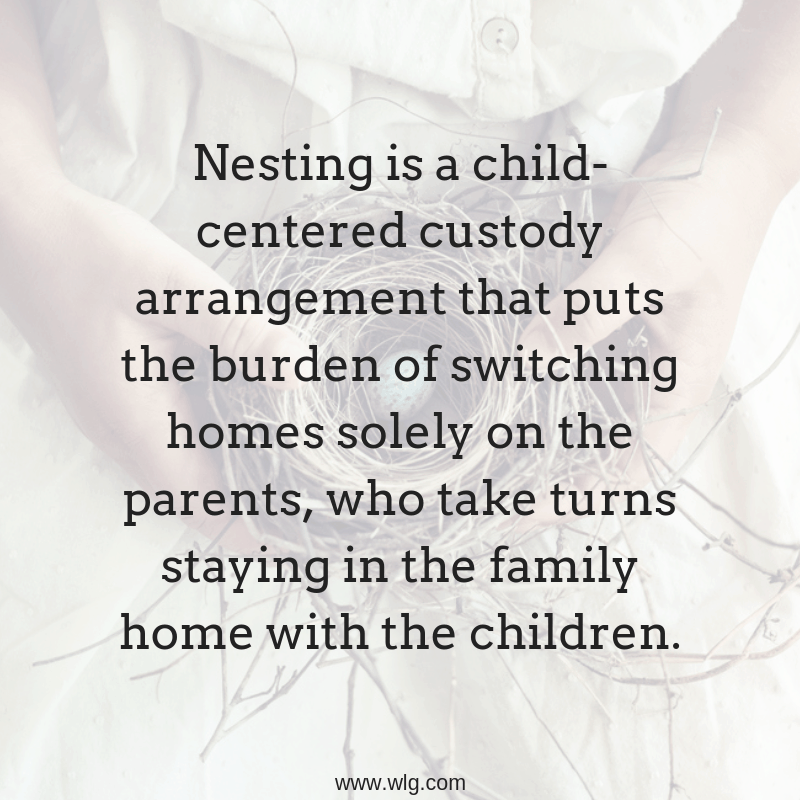Child-Centered Custody: How Does Nesting Help Kids?

Nesting is a child-centered custody arrangement that puts the burden of switching homes solely on the parents, who take turns staying in the family home with the children. The divorced couple will usually rent a separate house or apartment where one person will go during the other’s parenting time so that the children never have to move between households. This arrangement benefits kids for the following reasons:
1. Stability. Remaining in the family home full-time decreases the upheaval many kids feel during traditional visitation swaps. There’s no scrambling to find clothing or homework left in the other parent’s home. Kids don’t have to remember where they’ll be every night. They don’t have to go through the stress of adjusting to a new neighborhood, or feel homesick in a new place. Nesting minimizes the change that kids experience during divorce.
2. Mental health benefits. Children with emotional issues and special needs are particularly vulnerable to divorce. Having to navigate two separate homes, with different routines, can be challenging for a child who’s predisposed to depression, anxiety, or attention deficit disorders. The external structure and predictability that nesting provides can help emotionally vulnerable children feel more regulated.
Is nesting the right fit for your co-parenting relationship?
Nesting requires a tremendous amount of maturity, effective communication, and problem-solving skills on the part of both parents. It’s not advisable for high-conflict couples, or in situations where one parent is disorganized or irresponsible.
If you and your ex have an amicable relationship, and are considering nesting, make sure you include a nesting plan in your child custody agreement. Your plan should cover:
Clearly delineated household responsibilities, financial obligations, and custody schedules. Who will handle the bills for each home? How will you determine division of labor, i.e. housecleaning and food-shopping? Is there an “open door” policy and family dinners? Or is there an expectation that parents don’t intrude on the other’s nesting time?
Dissolution of nesting plan. Specify when the nesting plan will end. Is this just a temporary plan until young children mature, or do you intend to keep it up through their high school years, or even into college? If you co-own the family home, what mechanism will you use to dissolve your property arrangement: do you sell or does one party buy out the other?
New partners. When are new partners allowed to stay in the family home? If one of you remarries, will the nesting plan dissolve? Nesting can be emotionally challenging for parents, who may struggle with not having one place to call home. It can also make it difficult to move on emotionally when you still share living spaces (and beds!) with your ex, although not at the same time. But knowing you’ve created an arrangement that it’s in the best interest of your kids may make the discomfort worth it.
Have questions about child custody and parenting time plans? Interested in learning more about how to include nesting in your custody agreement? We can help. For answers to all your divorce and child custody questions, please call us today at 888-888-0919 to schedule your initial consultation, or please click the button below. Safeguard your children, starting today.




